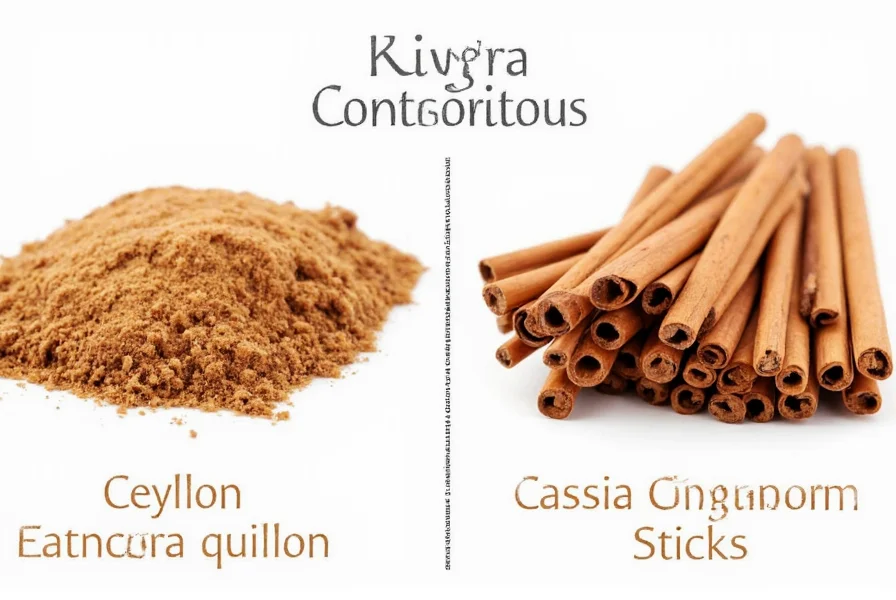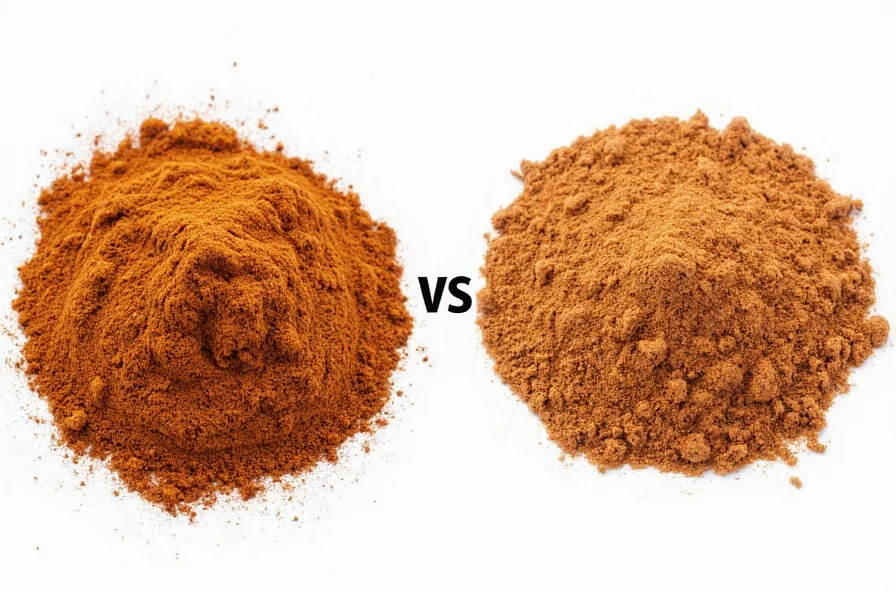When comparing ceylon cinnamon vs regular cinnamon, understanding their fundamental differences is essential for both culinary excellence and health-conscious consumption. These two varieties, often confused in everyday use, represent distinct species with unique characteristics that affect flavor, safety, and application in cooking and wellness practices.
Understanding Cinnamon Varieties
Cinnamon isn't a single spice but rather comes from different species of Cinnamomum trees. The confusion between ceylon cinnamon vs regular cinnamon stems from marketing practices that label cassia as simply "cinnamon" in many markets, particularly in the United States.
Ceylon cinnamon (Cinnamomum verum), often called "true cinnamon," originates from Sri Lanka and southern India. It's the variety historically prized by ancient civilizations and European explorers. Regular cinnamon, more accurately called cassia (Cinnamomum cassia), primarily comes from China and Indonesia and accounts for approximately 90% of cinnamon sold in the United States.
Physical and Sensory Differences
The most immediate distinction between ceylon cinnamon vs regular cinnamon lies in their physical structure and sensory properties:
| Characteristic | Ceylon Cinnamon | Regular Cinnamon (Cassia) |
|---|---|---|
| Bark Structure | Multiple thin, delicate layers forming a tight, hollow tube | Thick, hard single layer that's difficult to break |
| Color | Light tan to light brown | Dark reddish-brown |
| Taste Profile | Mild, sweet, citrusy with subtle complexity | Strong, intense, noticeably hotter with pronounced bitterness |
| Aroma | Delicate, floral notes | Powerful, pungent scent |

Chemical Composition: The Critical Difference
When examining ceylon cinnamon vs regular cinnamon from a health perspective, the most significant difference involves coumarin content. Coumarin is a naturally occurring compound that gives cinnamon its distinctive flavor but can be harmful in large quantities.
Cassia cinnamon contains approximately 1-5% coumarin by weight, while Ceylon cinnamon contains only about 0.004-0.04%. This dramatic difference has important implications for regular consumption. The European Food Safety Authority recommends a maximum daily intake of 0.1 mg of coumarin per kilogram of body weight. For a 130-pound person, this translates to approximately 1 teaspoon of cassia cinnamon daily, while Ceylon cinnamon can be consumed in much larger quantities without concern.
Health Benefits and Considerations
Both varieties of cinnamon offer potential health benefits, including:
- Antioxidant properties that combat oxidative stress
- Potential blood sugar regulation effects
- Anti-inflammatory compounds
- Antimicrobial properties
However, when comparing ceylon cinnamon vs regular cinnamon for daily health supplementation, Ceylon's significantly lower coumarin content makes it the safer choice for regular, long-term use. High coumarin intake from cassia cinnamon has been linked to potential liver damage in sensitive individuals and those with pre-existing liver conditions.
For occasional culinary use, cassia cinnamon's stronger flavor profile works well in robust dishes like curries, stews, and baked goods where its intensity can shine. Ceylon cinnamon's delicate flavor excels in more subtle applications like custards, light sauces, and beverages where its nuanced profile won't overwhelm other ingredients.
Practical Guidance for Consumers
When shopping for cinnamon, most products labeled simply as "cinnamon" in American supermarkets contain cassia. To ensure you're purchasing Ceylon cinnamon:
- Look for explicit labeling as "Ceylon cinnamon," "true cinnamon," or Cinnamomum verum
- Check the price point—Ceylon is typically more expensive due to lower production volumes
- Examine the physical structure—Ceylon forms delicate, multi-layered quills
- Purchase from specialty spice retailers who specify the cinnamon variety
For those incorporating cinnamon into daily wellness routines, nutrition experts generally recommend Ceylon cinnamon due to its superior safety profile. However, for occasional cooking applications where strong flavor is desired, cassia remains a perfectly acceptable option.

Making the Right Choice for Your Needs
The choice between ceylon cinnamon vs regular cinnamon ultimately depends on your specific application and consumption frequency. Understanding these differences empowers you to make informed decisions that balance flavor preferences with health considerations.
Culinary professionals often maintain both varieties in their pantries, selecting each based on the specific dish requirements. Home cooks can benefit from this same approach—keeping cassia for bold recipes and Ceylon for more delicate preparations or daily use.
Frequently Asked Questions
What's the main difference between Ceylon and cassia cinnamon?
The primary difference lies in coumarin content and physical structure. Ceylon cinnamon has multiple thin layers forming delicate quills and contains significantly less coumarin (0.004-0.04%) compared to cassia (1-5%), making it safer for regular consumption.
Can I substitute Ceylon cinnamon for regular cinnamon in recipes?
Yes, but with adjustments. Ceylon has a milder flavor, so you may need 1.5-2 times more Ceylon to achieve the same intensity as cassia. For delicate dishes, use equal amounts, but for robust recipes, increase the Ceylon quantity slightly.
How much cinnamon is safe to consume daily?
For cassia cinnamon, limit to 1 teaspoon (about 2-4 grams) daily due to coumarin content. Ceylon cinnamon can be consumed in larger amounts—up to 1-2 tablespoons daily is generally considered safe for most adults.
Why is Ceylon cinnamon more expensive than regular cinnamon?
Ceylon cinnamon commands a higher price due to more labor-intensive harvesting methods, lower yield per tree, and limited growing regions primarily in Sri Lanka. The delicate multi-layered bark requires careful manual processing compared to cassia's thicker, easier-to-harvest bark.
How can I tell if my cinnamon is Ceylon or cassia?
Examine the quills: Ceylon forms thin, multi-layered, tightly rolled tubes that are easy to break, while cassia has thick, hard, single-layer sticks that resist breaking. Ceylon powder is lighter in color (tan) compared to cassia's darker reddish-brown hue.











 浙公网安备
33010002000092号
浙公网安备
33010002000092号 浙B2-20120091-4
浙B2-20120091-4